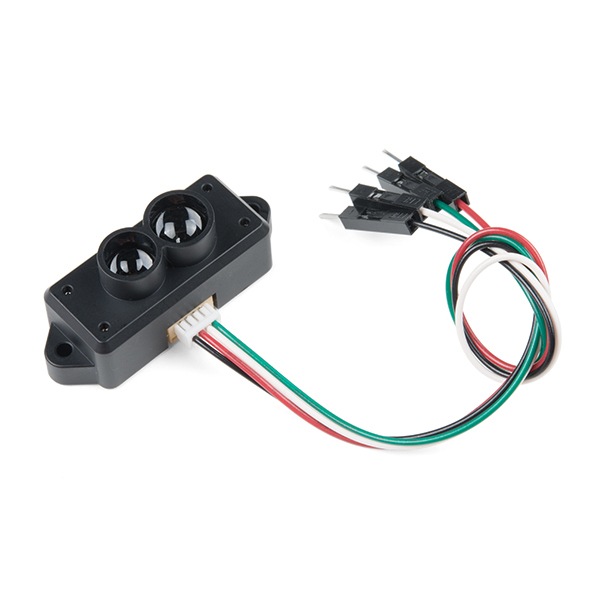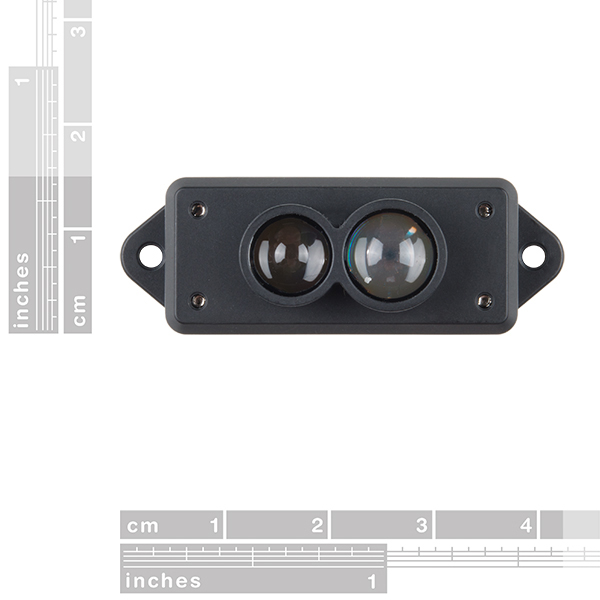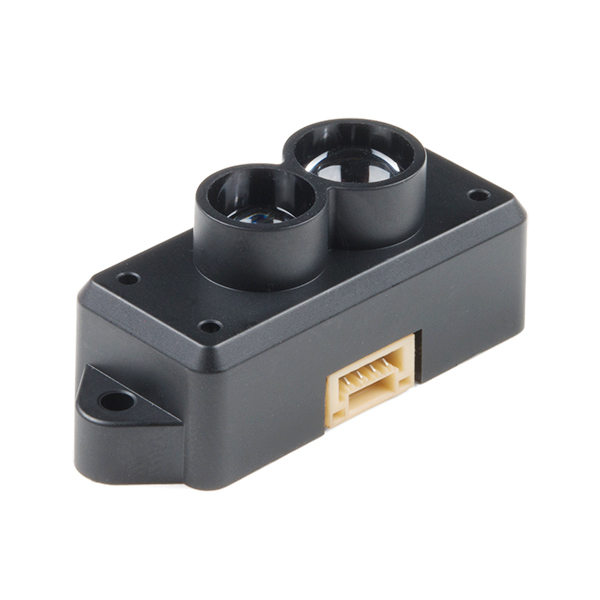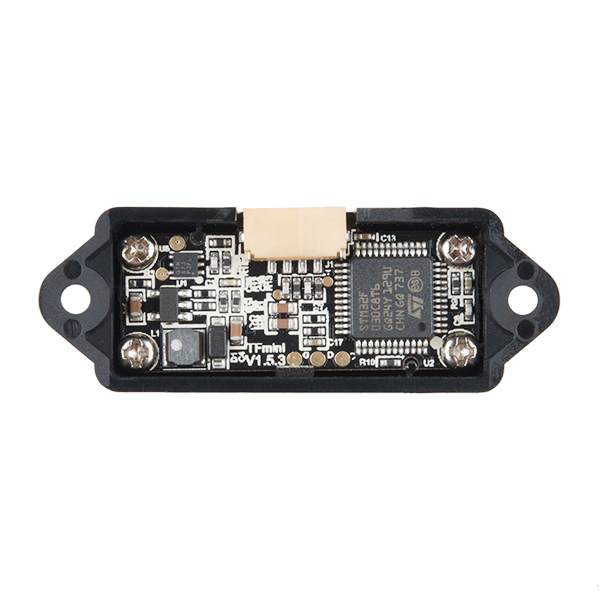TFMini - Micro LiDAR Module
The TFMini is a ToF (Time of Flight) LiDAR sensor capable of measuring the distance to an object as close as 30 centimeters and as far as 12 meters! As with all LiDAR sensors, your effective detection distance will vary depending on lighting conditions and the reflectivity of your target object, but what makes this sensor special is its size. Measuring only 42x15x16mm, the TFMini allows you to integrate LiDAR into applications traditionally reserved for smaller sensors such as the SHARP GP-series infrared rangefinders. The TFMini is easy to power at only 5V and easy to talk to using a 3.3V UART at 115200 baud.
This version of the TFMini comes with an easy to use bread board friendly cable. The four wires are terminated in pins making it easy to use with Arduinos and other platforms with female headers. If you are looking to use I2C with the TFMini, we also offer a version with Qwiic capabilities, as well!
Important: This product does not use laser light for ranging. Instead it contains an LED and optics. Many such systems are being marketed under the name "LiDAR," although it may be more appropriate to think of this device as a "Time-of-Flight Infrared Rangefinder". It differs significantly from traditional IR rangefinders in that it uses ToF to determine range and not triangulation — as is performed by the Sharp GP-series devices.
- TFMini Micro LiDAR Module
- Hookup Wire
- Input Voltage: 5V
- Average Power: ≤120mW
- LED Peak Current: 800mA
- UART TTL Voltage: 3.3V
- Baud Rate: 115200 8N1
- Resolution: 5mm
- Minimum Detected Object Size at 2m: 20mm
- Operating Wavelength: 850nm
- Signal Acceptance Angle: 2.3°
TFMini - Micro LiDAR Module Product Help and Resources
TFMini - Micro LiDAR Module Hookup Guide
April 13, 2018
The TFMini is a ToF (Time of Flight) LiDAR sensor capable of measuring the distance to an object as close as 30 cm and as far as 12 meters! The TFMini allows you to integrate LiDAR into applications traditionally reserved for smaller sensors such as the SHARP GP-series infrared rangefinders.
Core Skill: Programming
If a board needs code or communicates somehow, you're going to need to know how to program or interface with it. The programming skill is all about communication and code.
Skill Level: Competent - The toolchain for programming is a bit more complex and will examples may not be explicitly provided for you. You will be required to have a fundamental knowledge of programming and be required to provide your own code. You may need to modify existing libraries or code to work with your specific hardware. Sensor and hardware interfaces will be SPI or I2C.
See all skill levels
Core Skill: Electrical Prototyping
If it requires power, you need to know how much, what all the pins do, and how to hook it up. You may need to reference datasheets, schematics, and know the ins and outs of electronics.
Skill Level: Competent - You will be required to reference a datasheet or schematic to know how to use a component. Your knowledge of a datasheet will only require basic features like power requirements, pinouts, or communications type. Also, you may need a power supply that?s greater than 12V or more than 1A worth of current.
See all skill levels
Comments
Looking for answers to technical questions?
We welcome your comments and suggestions below. However, if you are looking for solutions to technical questions please see our Technical Assistance page.
Customer Reviews
5 out of 5
Based on 6 ratings:
1 of 1 found this helpful:
Best small rangefinder ever!
These are great, easy to use, reliable, and they read very consistently, even outdoors. Be careful not to stress the connector by pulling on the wires or bending the connector. I broke one off doing this. The force wasn't that much, but over a few days it was too much for it. My fault though, not the TFMini. The only real downside with the TFMini is that it is serial, not I2C. But, the Rx pin (on the TFMini) isn't strictly needed, so you can get away only one data pin.
UART is the best !
Sensor used online here https://www.serveurperso.com/?page=robot
Works very well!
This device can measure distance up to about 12 meters, according to the data sheet, which is more than I need it to. The only downside is that it can’t measure anything less than about 11.81 feet. To be fair, it says this in the data sheet (although they mention the minimum distance in cm I think), so I can’t really dock points for that. Other than that, it works very well using a standard 5V serial connection with an Arduino. I just used one of these in a Siri-compatible garage door opener/closed.
Connect sensor, start-up GUI and it works :D
Connect sensor, start-up GUI and it works :D





Hello, Do you know if there is a command that you could send to the TF Mini in order to change frequency from 100Hz to 1Hz?
I found the product manual from Benewake's website to be helpful as it has more information than the datasheet. Thought I'd share the link here.
http://www.benewake.com/en/down.html
Can this device be used to measure the velocity of a laterally passing object?
i have read the data sheet and the sample sketch and can not find anywhere what the max speed of updates is. how many measurements can be taken in a second? there is a timing chart of sorts on the data sheet but i can not make any sense out of it.
100 samples per second